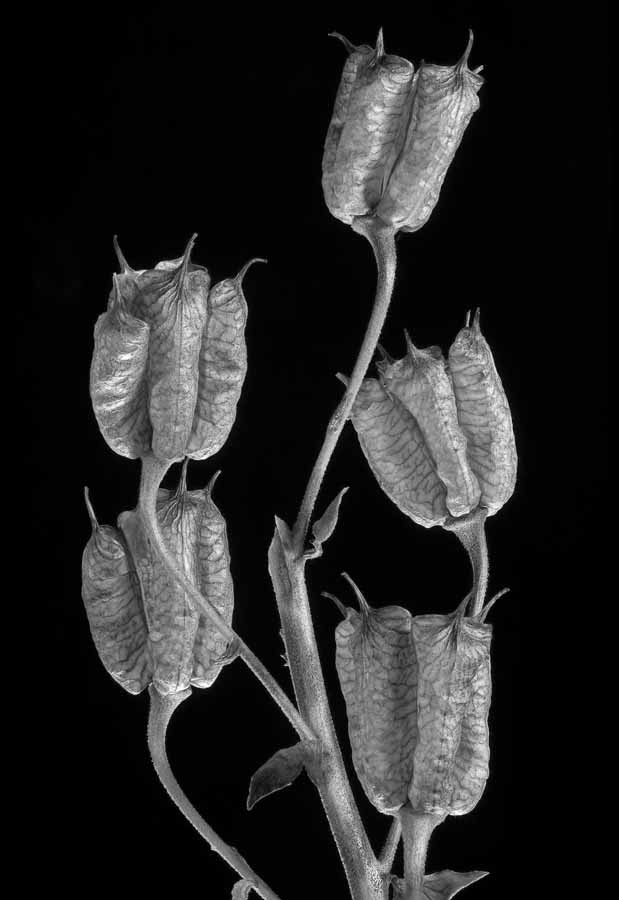Steven Skopik’s comments
In Susan Larkin’s “Monkshood” we see in an image whose allure is less cerebral than it is frankly sensual. Evoking the early twentieth century German photographer Albert Renger-Patchz, who similarly trained his camera on a range of different types of plants, usually withered and pictured against a blank background, Ms. Larkin’s picture meticulously describes her subject in a manner that grants it a delicious availability.
The appeal of Larkin’s piece is rooted in a quintessentially photographic effect. The photograph, more than any other type of representation, is able to offer forth its subject with a strange, urgent sense of “therenesss.” Larkin achieves this odd hyper-present effect through the use of razor-sharp focus, and her photo’s richly detailed tonal description of the withered stalks and pods. The plants have an astonishing luminous quality; they appear to radiate light, rather than reflect it. The net effect is to imbue these modest objects with an unaccountable sense of poised significance.
Finally, it must be said, that despite their husk-like state of desiccation, the plants possesses a vivid sensuality. No doubt this is in part due to the picture’s formal attributes (just described), but it also has to do with the subject matter, which summons up associations with life, death, and reproduction and renewal. I’m not familiar with this particular species, but I assume we’re looking at seed vessels of some sort. To declare that this is an erotic photograph is merely to state the facts; Larkin allows us to look lingeringly on the genitals and reproductive apparatus of a living–or once living– organism. Intended in an entirely complementary manner, this image is the exhibition’s most overtly lurid photograph.
